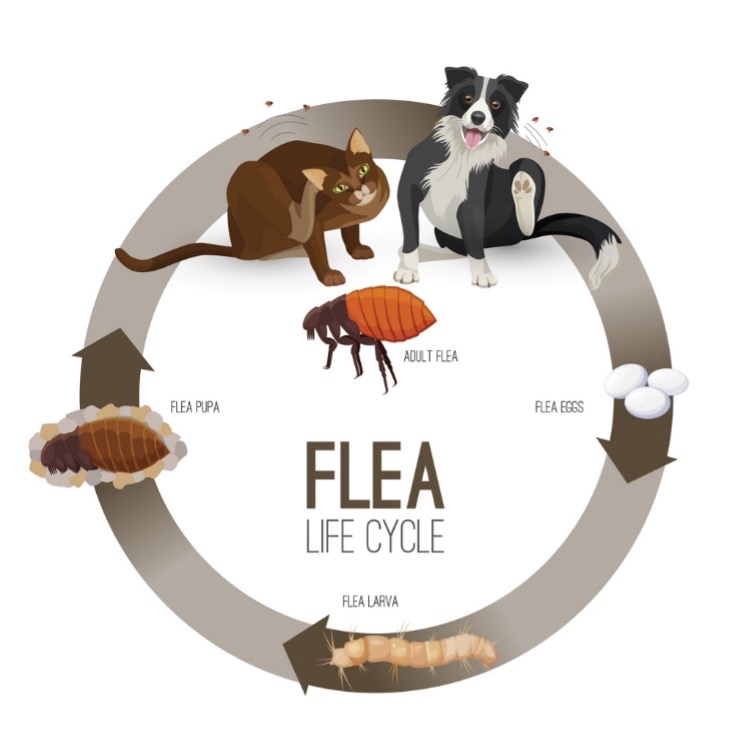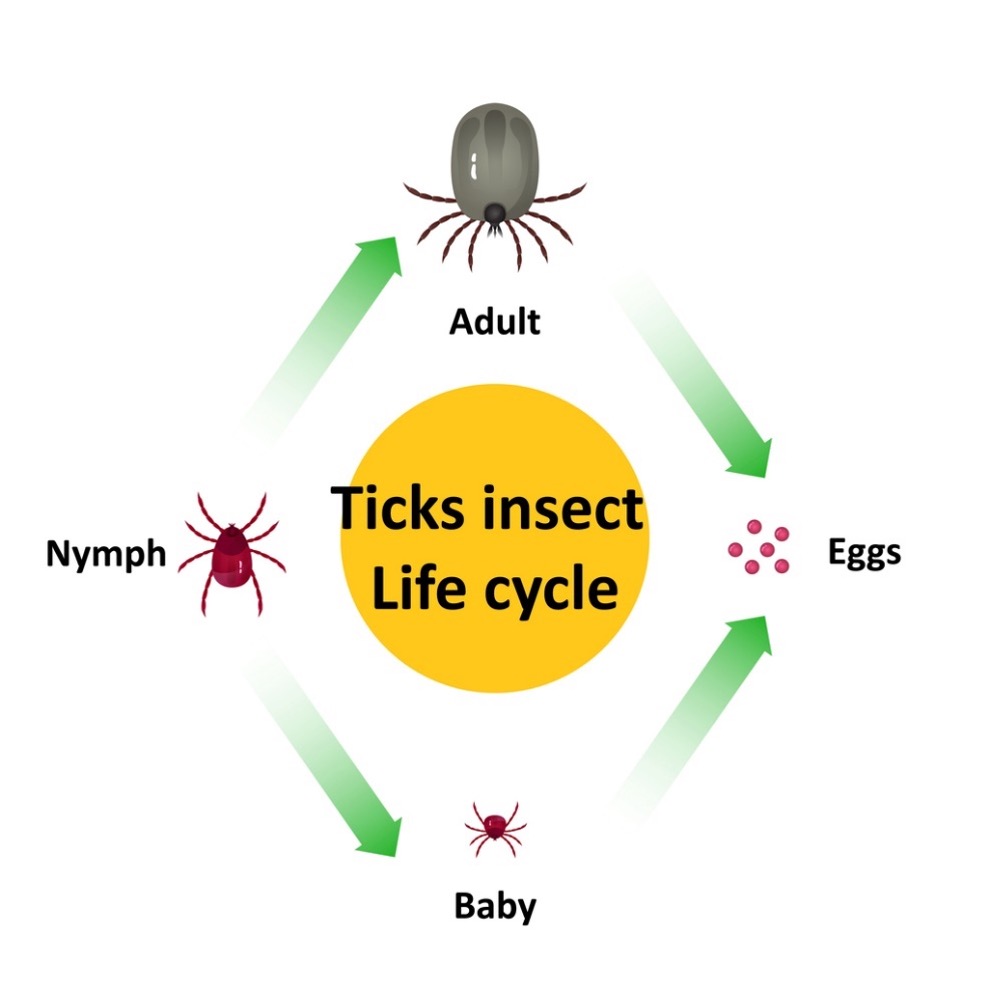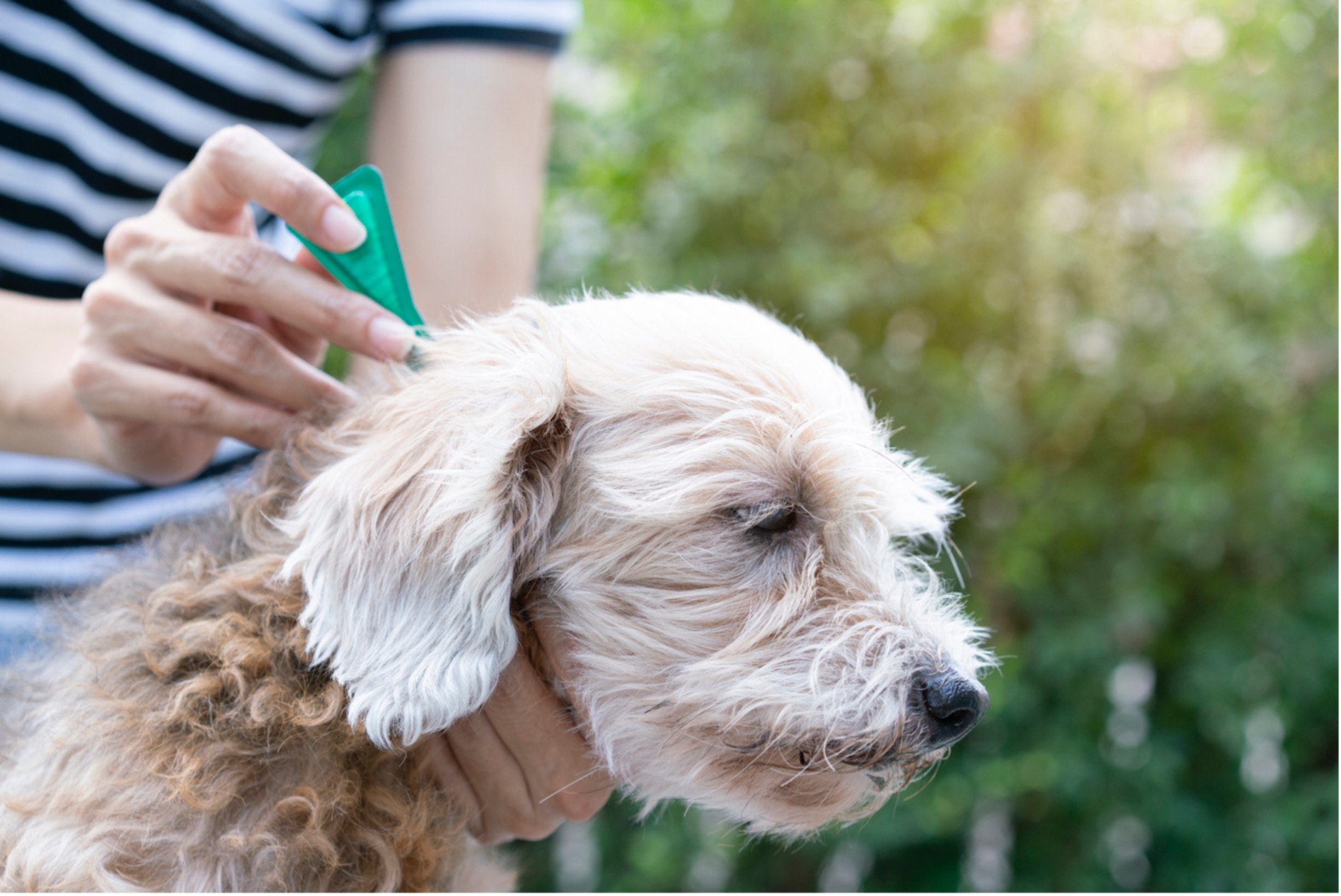It’s time to bid farewell to those annoying fleas and ticks. These tiny critters not only make your pets uncomfortable but can also pose serious health risks. Our comprehensive guide will provide the knowledge and tools to keep your home and pets free from pests. Don’t let fleas and ticks dictate your pet’s well-being. Take charge today with Aspen Vet Clinic’s guide to protection from fleas and ticks.
Life Cycle of Fleas

Fleas undergo four stages: egg, larva, pupa, and adult. The eggs are laid on the host animal but quickly fall off and can be found in carpets, bedding, cracks in the flooring, and furniture. The larvae hatch from the eggs and feed on organic matter, such as flea feces and skin debris. They eventually spin a cocoon and emerge as adults, ready to jump onto a new host.
Life Cycle of Ticks

The life cycle of a tick also comprises four stages: egg, larva, nymph, and adult, with each stage requiring a blood meal from a host to progress to the next.
Common Signs of Flea and Tick Infestations
Detecting a flea or tick infestation early is crucial for effectively treating the problem. Watch for signs indicating fleas or ticks have infested your pet.
- Excessive scratching, biting, or licking.
- Mild to severe redness, irritated skin, or small bumps on your pet’s body.
- Fleas leave behind “flea dirt”. Flea dirt is actually flea poop. It looks like tiny black specks and is made up of digested blood.
- Fleas or ticks can sometimes be seen crawling through a pet’s fur.
You can find fleas anywhere on a pet’s body. However, fleas prefer areas where the pet cannot easily groom, such as the back of the neck, face, ears, and the base of the tail. According to the AVMA, in dogs, ticks are most often found around the neck, in the ears, in the folds between the legs and body, and between the toes. However, they can be found anywhere on the body. Cats may have ticks on their neck or face.
Understanding the Vital Importance of Protection from Fleas and Ticks
Fleas and ticks are not just nuisances; they can pose serious health risks to pets.
- Allergic reactions: Fleas can cause allergic reactions in animals, leading to excessive itching, hair loss, and skin infections.
- Transmit diseases: Fleas can also transmit diseases such as Bartonella (cat scratch fever) and tapeworms.
- Anemia: Fleas can cause anemia in cats and dogs, especially if the infestation is severe. Fleas feed on blood; when they infest an animal in large numbers, they can cause significant blood loss over time. Anemia can cause symptoms such as weakness, lethargy, and pale gums, and in severe cases, it can be life-threatening if left untreated.
- Ticks can transmit a host of diseases, such as: Lyme Disease, Ehrlichiosis, Rocky Mountain Spotted Fever, Coonhound Paralysis, and Ehrlichia Anaplasmosis.
Protection from Fleas and Ticks with Preventive Medicine
Protecting pets from fleas and ticks is essential for their well-being. There are several methods you can use to protect your furry friends. The preventative medications offered are:
- Topical Treatments
- Oral Medication
- Flea and Tick Collars
Which Flea and Tick Protection is Best for My Pet?
With a wide range of flea and tick protection products available, choosing the right one can be overwhelming. Consider your pet’s age, size, and health condition when deciding. Some products may not be suitable for puppies, kittens, or elderly pets. It’s also crucial to follow the instructions provided by the manufacturer to ensure the product’s effectiveness and safety.
Additionally, reports suggest that fleas and ticks are developing resistance to some over-the-counter (OTC) medications. This resistance can occur due to various factors, including overuse or misuse of certain products, genetic factors in flea and tick populations, and changes in their biology over time.
Consult with Dr. Moriarty on parasite medications. She can guide you on the most effective and appropriate treatments for your pet’s needs.
Removing Ticks from Your Pet’s Body
It is crucial to remove ticks correctly for several reasons:
- Incorrectly removing a tick can regurgitate its stomach contents into the wound, increasing the risk of disease transmission.
- Squeezing or twisting the tick can cause it to break apart, leaving parts of its mouthparts embedded in the skin. These left-behind mouth parts can lead to infection or localized reactions.
- Ticks can be firmly attached, and incorrect removal methods may cause pain or irritation.
- Some pets may be allergic to tick saliva or components of the tick’s body. Proper removal minimizes the likelihood of allergic reactions.
- If you damage the skin during improper tick removal, it may become susceptible to secondary bacterial infections. Proper removal reduces this risk.
Please see our blog Flea and Tick Prevention – Spring Creek, Nevada on how to safely remove ticks which includes a step-by-step video.
Tips for Maintaining a Flea and Tick-free Environment
Preventing fleas and ticks from infesting your pets goes beyond just treating them. To prevent re-infestation, it is vital to fully eradicate these pests from your home.
- Vacuuming helps control fleas and ticks by physically removing adult insects, disrupting their life cycle by eliminating eggs and larvae deep within carpets and upholstery, reducing suitable habitats for breeding, and capturing pests in vacuum bags or canisters.
- Groom your pets using a flea comb. You can learn from PetMD How to Use a Flea Comb on a Cat and How to Use a Flea Comb for Dogs.
- Wash your pet’s bedding and any other fabric with which they come into contact such as pet beds or blankets.
- Keep your outdoor areas well-maintained, such as mowing the lawn and removing debris, can reduce the chances of fleas and ticks thriving in your yard.
- Check your pets for ticks daily, especially after they spend time outdoors. If you find a tick on your pet, remove it right away.
- Flea traps, such as the Victor Flea Trap, can help reduce flea infestations to a minimum. They work by attracting fleas to a source of heat, usually a low-wattage light bulb that mimics the heat of a warm-blooded animal. However, they will not get rid of fleas on your pet.
- Diatomaceous earth (food grade) is a natural substance made from fossilized diatoms (a type of algae). DE is commonly used to kill fleas because it absorbs oils from their exoskeletons, leading to dehydration and death. Read and follow the product’s directions and apply food-grade DE to flea-infested areas, let it sit for 12-48 hours, then vacuum thoroughly. Repeat as necessary. DE is not toxic to pets but should be used with caution.
Protecting from Fleas and Ticks: Keeping Your Pets and Home Pest-Free
At Aspen Vet Clinic, we understand that fleas and ticks can be a persistent problem for both pets and humans. However, with proper knowledge and preventative measures, you can protect your furry friends and keep your home pest-free. Understanding the life cycles of these pests, recognizing the signs of infestation, and choosing the appropriate protection methods are essential steps in the battle against fleas and ticks. Please contact us for personalized advice on protecting your pets from fleas and ticks and say goodbye to those annoying pests.
Your Caring Team

